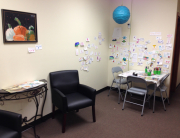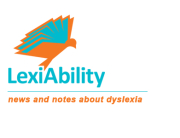As with all high level tasks, your brain generalizes simple, component parts (like turning letters into words and words into sentences) so it can focus on more complex tasks (like combining sentences into complex ideas). “We don’t catch every detail, we’re not like computers or NSA databases,” said psychologist Tom Stafford, who studies typos of the University of Sheffield in the UK.. “Rather, we take in sensory information and combine it with what we expect, and we extract meaning.”
The reason we don’t see our own typos is because what we see on the screen is competing with the version that exists in our heads.
“Once you’ve learned something in a particular way, it’s hard to see the details without changing the visual form,” he said.
While typos in general are not tied to dyslexia, the way we see our own writing – and the difficulty in recognizing mistakes – is part of this process of learning in a particular way that is challenging to correct. People with dyslexia tend to develop ways to compensate for reading and writing. Those learned patterns are difficult to unlearn.
LexiAbility uses an alternate method of instruction for dyslexia students. Independent, scientific research proves the most effective instruction for teaching reading to those with dyslexia is with an Orton-Gillingham based methodology.
To learn more, please call Pam Taylor at LexiAbility today! 816-863-7331.






Connect with LexiAbility
RSS
Facebook
Twitter